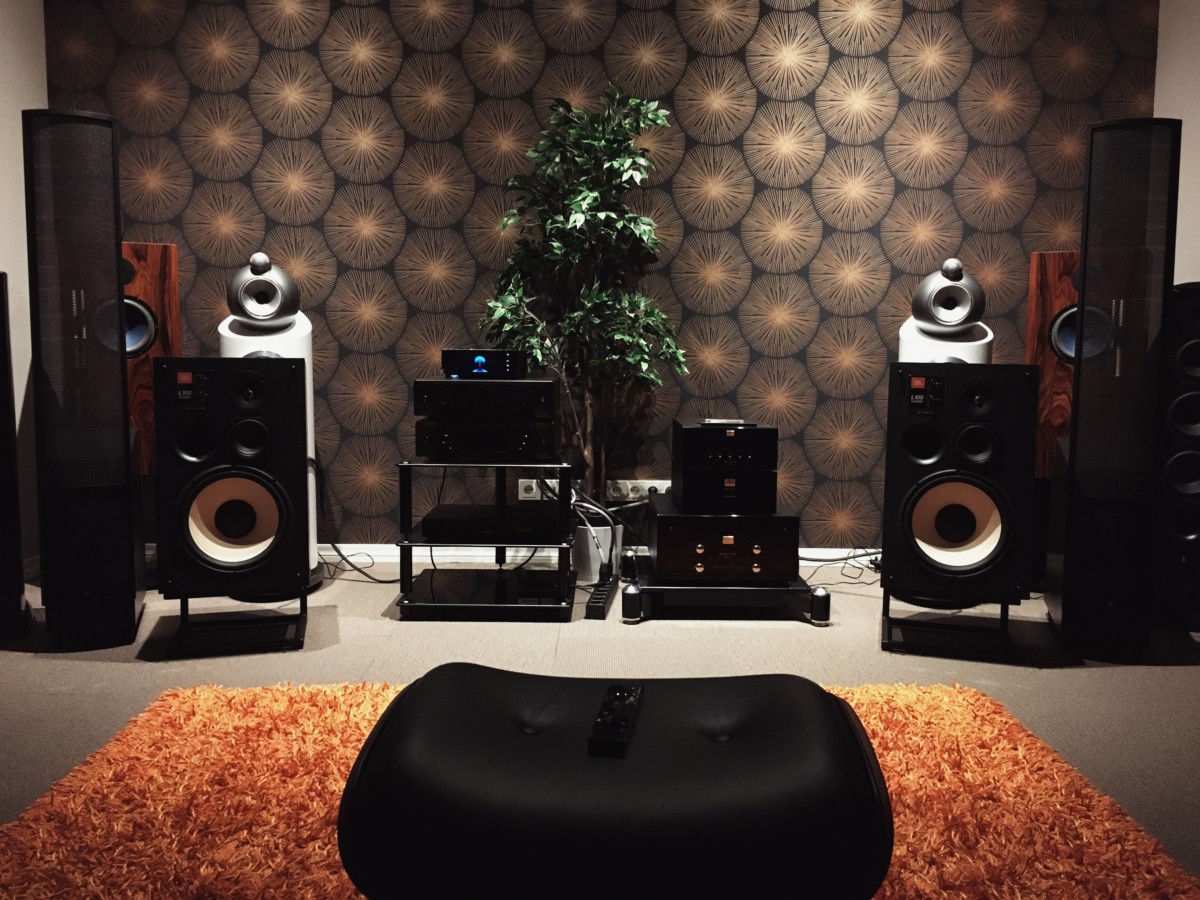Gaming Room Ideas, Optimizing Your Gaming Setup
Transform your space into the best gaming setup with these expert-guided gaming room ideas. This guide will help you create a personalized environment that enhances your gaming experience. The post Gaming Room Ideas, Optimizing Your Gaming Setup appeared first on Redfin | Real Estate Tips for Home Buying, Selling & More.
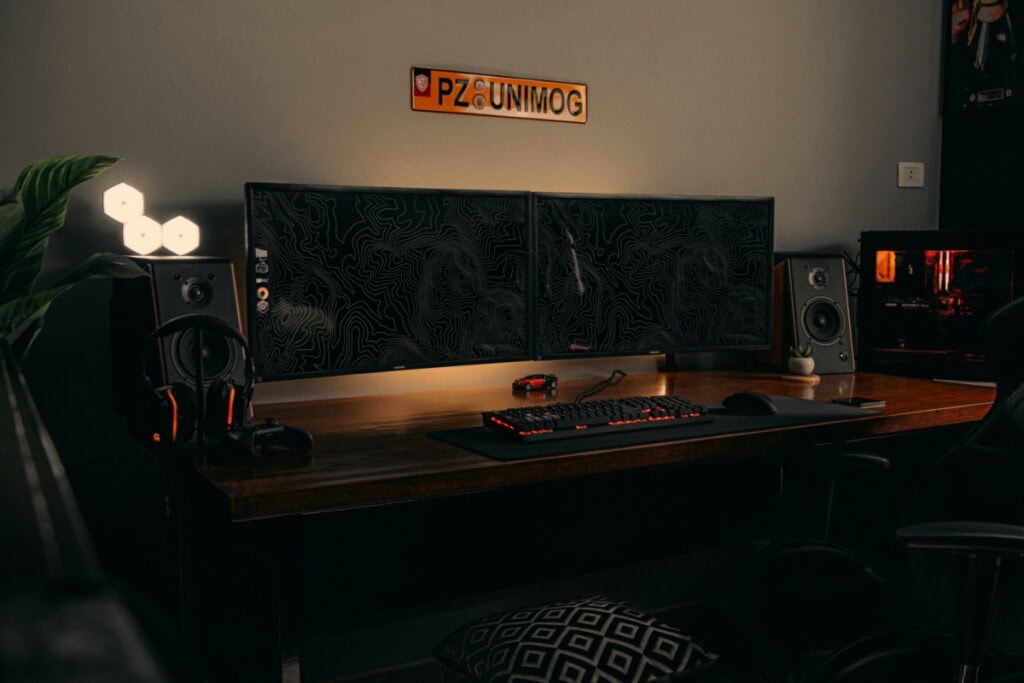
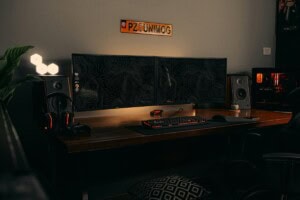
It’s finally time to create your gaming space, or maybe you’re looking to optimize your gaming experience — either way, it all leads to the search for the best gaming room ideas. With so many gaming setup options and expert advice available, it’s easy to feel overwhelmed and unsure of where to start. You just want to create a space to queue Valorant or Marvel Rivals from while enjoying your own space. However, the mass options available from choosing the right gaming furniture to your game room decor are stopping you from doing so easily.
Our advice? Keep it simple, as Bryce Smith of Pop-A-Shot, the original arcade basketball game says, “To make your game room a special place in the home, aspire to make it its own destination. A special place where, upon entering, you and your guests feel like you left home completely. Draw inspiration from others, social media, and so on, but remember to let your imagination and personality drive the bus. The goal is not to replicate someone else’s vision, but to make it uniquely yours.”
As you game from your home in New York, rental in Baltimore, or apartment in Cincinnati, this Redfin article includes expert advice to help you create the best gaming room ready for long hours on your favorite games.
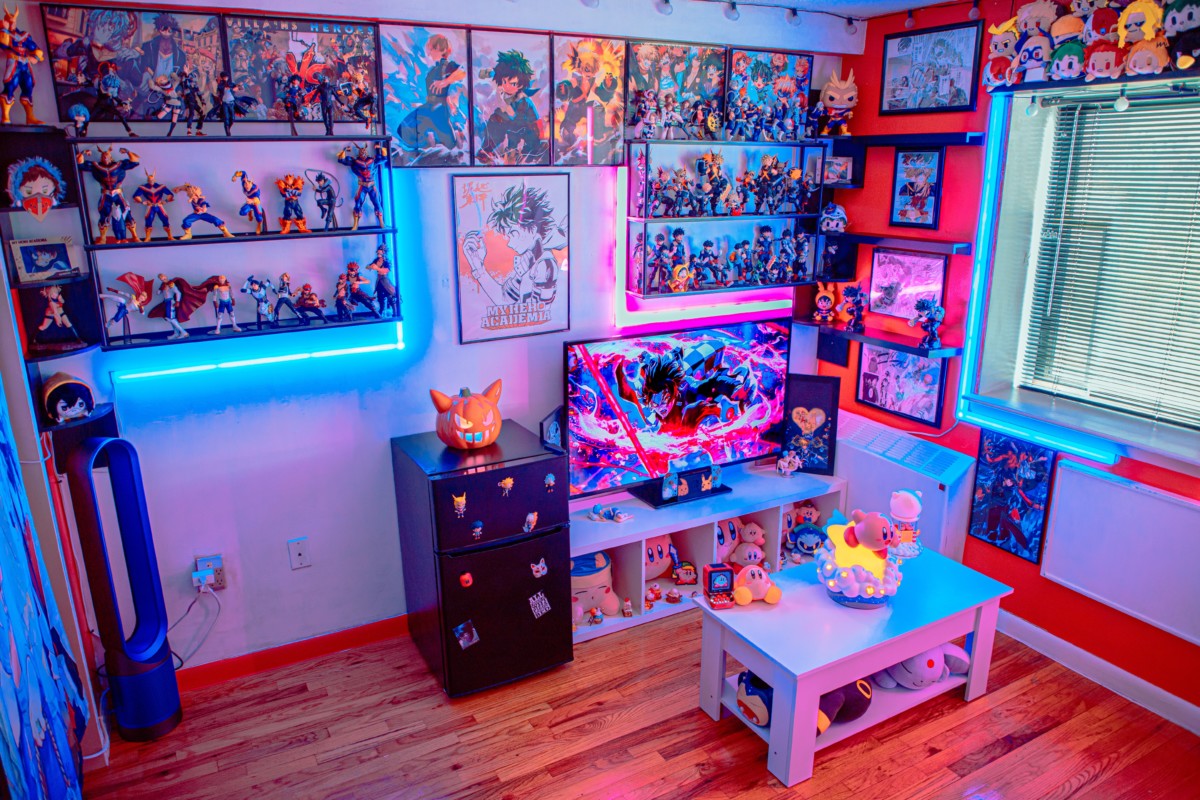
1) Bring your gaming room idea to life: pick a theme and decide on décor
Before you start purchasing products or ripping down walls, it’s important to decide on an aesthetic or theme for the gaming room. It’s your chance to embrace your favorite game, character, or genre, and manifest your room around that. If you’re using art, “try to choose art that compliments the game,” says Gary of The Vintage Poster, a boutique poster and print resource. “If you’re framing, make sure the frame contrasts the art – the contrast will make it pop.”
Do you like Mario? Try using a lot of reds and yellows, incorporate mushroom décor, and set up lights highlighting cool wall art and posters. Is Zelda your favorite? Focus more on greens and browns, memorabilia, and custom artwork. Fancy Call of Duty? Try embodying realistic art and camouflage colors throughout your room, and make sure your gaming setup is top-tier.
This first step is about brainstorming and being creative with your space. Choose something that you like and run with it. You want to be able to walk into your gaming room and feel inspired by simply being in your space.
2) Ensure you have a reliable internet connection
While this may sound obvious, it’s so important. Most games nowadays require an internet connection to play or at least have certain features that are unusable without one. Having a consistent connection will raise your gaming experience to the next level.
While one gigabit (Gbps) and even 2 Gbps internet is all the rage nowadays, you don’t actually need very much internet speed to play an online video game. Most people agree that you only need a download speed of 5 Mbps or faster to enjoy the most a game has to offer.*
Removing the nagging worry of losing connection in the middle of a match or online chat is a huge boost to the effectiveness of your gaming room.
*The FCC has a list of broadband speed guides that contain the minimum speed required to perform certain tasks. They claim that 4 Mbps is the minimum download speed for gaming, but experts believe that to be too slow.
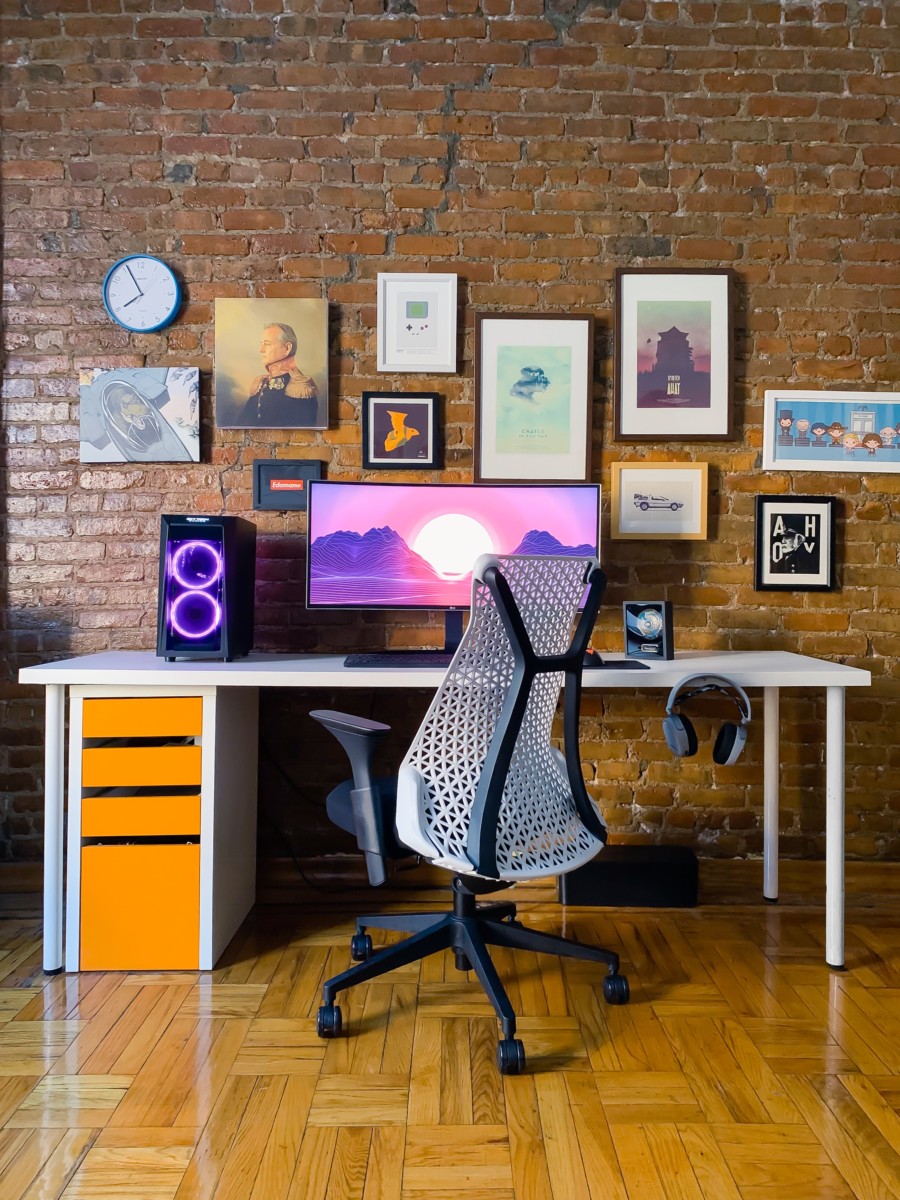
3) The importance of a desk
Now that you’ve chosen a theme and have your internet all sorted, it’s time for one of the most important decisions, choosing a desk. Some may think desks are simple, to just pick one: After all it is just a slab of material on 4 feet, right? Wrong. Your desk is the foundation of your gaming setup, so it’s important to choose one that fits your needs. Think of it like the foundation of a house, would you want a cheap, unstable foundation for your home? The same goes for your gaming space, a solid desk leads to a great experience.
First, consider a standing desk. These desks are great hybrid desks for work and gaming with additional benefits. As Progressive Desk says, “Optimizing your gaming space is about maximizing comfort, performance, and style. A height-adjustable gaming desk allows you to switch between sitting and standing, keeping you energized and focused during long sessions. Pair it with an ergonomic chair and a monitor stand to maintain proper posture and reduce strain, and add cable management solutions and smart accessories like USB grommets and monitor mounts to keep your setup sleek and clutter-free.
For an immersive experience, choose a desk that supports heavy gaming equipment and multiple monitors, ensuring stability and flexibility. With the right combination of ergonomics and customization, you can create the ultimate gaming environment that enhances both comfort and performance.”
Dickson of Effydesk shares the following advice when thinking of desks:
“As both a standing desk company owner and a big gaming enthusiast myself, I’ve spent a lot of time optimizing my own gaming space. First and foremost, ergonomics should be your foundation — position your monitor at eye level and ensure your desk height allows for a neutral wrist position to prevent fatigue during those marathon sessions. A height-adjustable standing desk is a fantastic tool here, as it lets you seamlessly switch between sitting and standing, keeping you comfortable and focused.
The most important tip: movement is key. Whether you’re sitting, standing, or even sitting on the floor, make sure you’re switching things up every 30 minutes or so. Staying in one position for too long can lead to stiffness and discomfort, so keep your body moving to stay sharp and energized.”
Michelle from Truly Ergonomic also speaks on the importance of ergonomics. She says, “Prioritize ergonomics. Invest in an adjustable chair and a desk that supports proper posture to prevent strain during long gaming sessions. On the desk, optimize monitor placement. Position your monitor at eye level and at a comfortable distance to reduce eye strain and improve focus.”
Michael Angelo Cruto of Anthro Desk adds, “Invest in an ergonomic chair and a height-adjustable standing desk to ensure comfort and maintain energy during long gaming sessions. Good posture can enhance performance and reduce fatigue. Monitor mounts can hold your screens at the correct ergonomic height to limit the strain on your neck.”
El-Hassani from The Para Game, suggests readers look into eco-friendly gaming desk options. El-Hassani states, “Most gaming desks are made from MDF (medium-density fiberboard), particleboard, or plastic-based laminates, which often contain harmful chemicals like formaldehyde. These materials aren’t just bad for the environment — they can also release toxins into your indoor space over time.
Switching to a sustainable gaming desk means reducing your carbon footprint, improving indoor air quality, and investing in furniture that lasts longer. To illustrate. Most traditional gaming desks are made from particleboard, MDF, or plastics, which can have a significant environmental impact. These materials contribute to deforestation, carbon emissions, and toxic waste when they end up in landfills. By choosing sustainable gaming desks, you help reduce waste, pollution, and deforestation while also improving the aesthetics of your setup.
Bamboo is one of the best materials for gaming desks. It’s a fast-growing, renewable resource that requires minimal water and no pesticides. Bamboo gaming desks are strong, stylish, and lightweight, making them perfect for gamers who want both durability and sustainability.”
There are many routes you can take depending on your space, but other common custom desk styles include:
- Floating/wall-mounted
- Corner
- Tall
- Curved
If you have limited space, use a floating desk to allow for more storage. If you have more space, try a longer, curved desk for extra desktops and decals. If you are going the more expensive custom route, you can even incorporate many of the above styles into one unique desk.
4) Choose a perfect gaming seat
You’ll likely spend most of your time here between consoles and your desktop, so it should be the pinnacle of comfort and style. As Wolfs Gaming Blog writes, “Never underestimate having a good place to park your bum! You can afford to save some pennies in many areas, but a good throne from which to command armies, shoot demons, and venture into forgotten realms isn’t one of them. Do yourself a favor and get a high-quality chair with good lumbar support. Your back will thank you the next time you engage in a lengthy session.”
Spending time fidgeting or squirming trying to get comfortable only takes away from your gaming experience. Carlos Fernandez CoFounder and CMO of the Kratos 4D Throne, a haptic feedback immersive gaming chair & multimedia seat adds, “So coming from an avid gamer and audio engineer who helped found the Kratos 4D Throne, a great gaming room starts with the right chair. Whether it’s an immersive haptic gaming chair like the Kratos 4D Throne that lets you feel every in-game action or a handcrafted, custom gaming chair designed to match your unique style. Comfort is key, so invest in good lumbar support and quality cushioning to keep you going during long sessions.”
5) Escape into virtual reality
Virtual Reality (VR) is perfect for a deeper game immersion experience. With technology advancing every day, VR is considered the future of gaming. To take full advantage of VR’s capabilities Justin Germino, owner of DragonBlogger shares the following advice:
“If you want to dabble in VR Gaming whether it is standalone with the Meta Quest 3 or with more dedicated PC VR gaming headsets, you will want to ensure you have ample lighting and space for depending on the type of VR gaming you want to do. For full-body immersive VR gaming, you will want to ensure you have 6 feet of clearance in all directions from your preferred standing area for VR gaming, some games on the Meta Quest 3 can have you do 360-degree spinning and ensure your gaming room has no objects from floor to ceiling within 6 feet of your playing area helps to ensure that you have maximum “VR Zone” coverage and minimum chance of extending one of your arms or legs through the zone coverage and striking an object like your own gaming chair, desk or an overhead ceiling fan for example. Don’t just think eye level, VR fitness games and some can have you strike upward meaning you can potentially hit the top of door frames, ceiling fans/hanging lights…etc. So ensure your area is completely free from obstacles and consider anything you may reach above your head as well.
For VR gaming, especially with the Meta Quest 3, which has AR and VR modes, you will want brighter lights, and here is where RGB-colored dim lights are not ideal in your environment, because the better the lighting the better the AR Mode and zone scanning the Meta Quest 3 can do. Always do full-body VR gaming in a well-lit room so that the external cameras on the VR headset can properly register all objects in the room and the space you are playing in.”
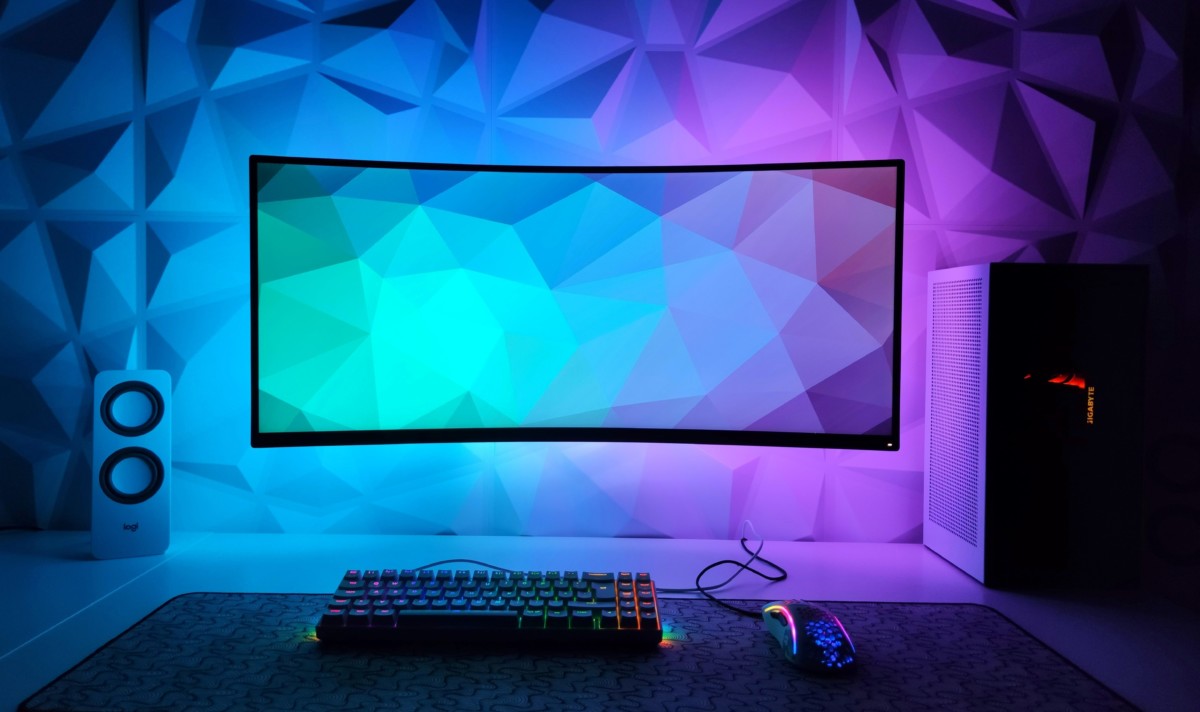
6) Invest in quality displays
You’ll be looking at your displays for hours on end while you game, so choose carefully. There are three general choices to choose from: monitors, televisions, and projectors. Monitors benefit from their smaller size and versatility, while “Projection screens can enhance your experience by increasing immersion,” says Benjamin of Elite Screens, a source for cinema-quality projector screens. “Not only do projector screens give you a cinematic feel, but they are better for your eyes as well.”
Projectors are generally best for much larger rooms and are hard to move from one room to another. TVs are the perfect option for those who like consoles and will be sitting farther away from the screen. However, since monitors tend to be the most popular, let’s take a close look at those.
There are four general quality aspects to take into account when choosing a monitor for your gaming room:
- Size: This is the diagonal distance between opposite corners of the screen, i.e. a 13” laptop measures 13” from the top right of the screen to the bottom left.
- Resolution: This is what determines the sharpness of the image on your screen. The more pixels your screen has, i.e. 1920 x 1080, the better your resolution will be.
- Refresh rates: This describes the frequency that a display updates or “redraws” an onscreen image. The amount of refreshes per second is measured in Hz, i.e. a refresh rate of 144 Hz means the screen refreshes 144 times per second.
- Price: Prices for monitors range from under $100 to $2000+. While the expensive monitors may look great, the lower end of the spectrum provides more than adequate quality.
Typically, most would agree that size doesn’t matter as much as resolution or refresh rate and most games will look great on your standard 1080p, 60Hz monitor. The newer Freesync and G-sync technologies produce better-quality images but are costly. Choose what specs fit your budget, and remember that higher numbers usually yield increasingly insignificant returns in performance.
When choosing a display, think about what type of games you play. Competitive gamers should focus on refresh rate and aim for a 120Hz or 144Hz display to stay ahead of the competition while role-playing and story gamers should prioritize a 4K resolution for the sharpest graphics. – Cable Matters, a knowledge base and source for computers and related products.
If you’ve decided on getting a 120Hz panel, make sure that it says 120Hz Native. This means the panel truly refreshes at that rate and isn’t a software magic trick. – Echogear, the hub for TV and electronic products.
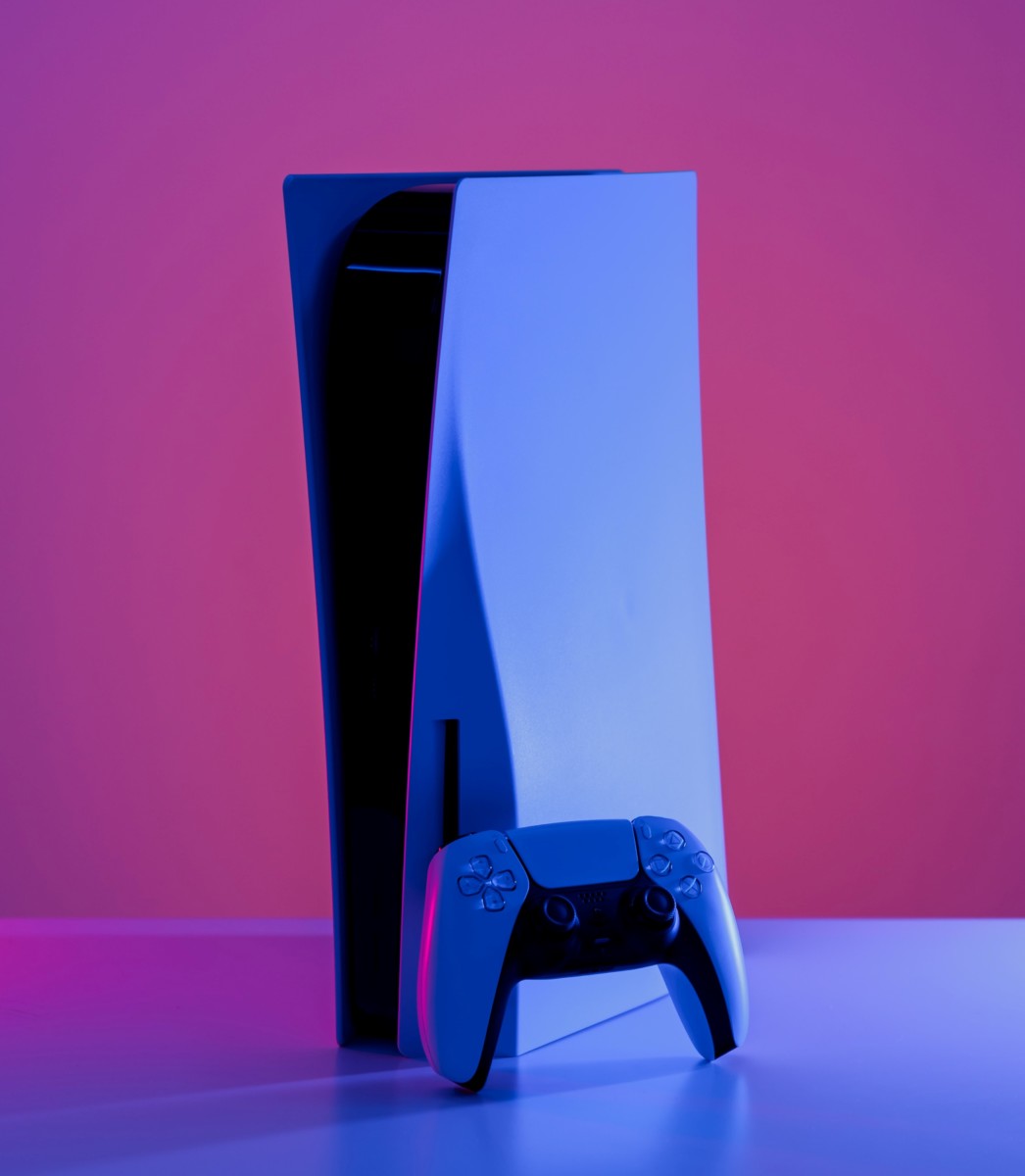
7) Craft your ultimate hardware setup
Are you a console fan? A desktop dueler? A VR wiz? Regardless, your gaming room needs gaming hardware. Consider a couple of options before splurging on a powerhouse setup. Style and price are also important.
As Brian Bencomo of Nerd Street Gamers advises, “To set up the perfect gaming space, you’ll need to invest in a gaming PC or console (PlayStation, Xbox, Nintendo Switch) with the right specifications to play your preferred titles with appropriate quality in mind. Some games can be played on any platform, but others are console exclusives or available solely on PC. Based on your gaming style, you’ll want to have the appropriate peripherals – like maybe a cool keyboard or some colorful controllers – and, of course, a quality microphone if you’re streaming.”
Before you purchase your dream console, or before hiding them behind a cupboard, think about what titles you will be playing and the hardware requirements. Nothing is more disappointing than buying a new PC or system and having it perform worse than you expected. Numbers are king here. Consoles are generally fixed in their performance capabilities, but desktops and laptops can be built with specific specifications in mind. Keep an eye out for these metrics when buying a computer:
- RAM/DRAM: Measured in GB, this is where short-term device memory is kept and determines how quickly a computer can function performing multiple tasks. A higher amount of RAM, e.g. 32GB, means that a computer can run multiple demanding tasks at once without reduced performance.
- Storage: Think of this as long-term memory for your computer. Usually, a computer will have at least 256GB of storage.
- Central Processing Unit (CPU): CPUs are made up of chips consisting of multiple cores that process most everything that runs your computer. Keep in mind that they can’t run anything on their own, and require quality RAM and storage to operate. Their power is measured in gigahertz (GHz).
- Graphics Processing Unit (GPU): The GPU works in tandem with the CPU to accelerate computer graphics workloads. GPUs can either be built into a computer with the CPU or exist separately, allowing for customization.
- Cooling capabilities: Demanding workloads result in the computer generating heat. Too much heat will reduce performance and can cause damage. There are a few ways to cool a computer, but the most common are air and liquid coolers.
In general, shoot for middle-of-the-road hardware. That is unless you want to spend thousands of extra dollars to experience the pinnacle of performance and style. Pre-built computers are more expensive but more convenient. If you have the ability, customize your gaming computer to your heart’s content.
Next, it’s time to think about aesthetics. When doing so, take your entire room into account. Don’t ignore the console’s or computer’s aesthetic value, and instead work them into the room. A console can be a statement piece that sits on top of a desk or TV unit. A computer can sit prominently, blending into your room’s theme. To level up your gaming room, let your hardware breathe freely.
8) Decide on a quality sound system
The audio quality that comes directly from a TV or laptop is generally poor. Adding external speakers will improve your audio exponentially. It adds dimensions to your sound that would otherwise be lost. Let’s look into some popular speaker styles.
- Soundbars: Soundbars are the minimalist, stylish choice. The trade-off here is looks and price for sound quality relative to more traditional speaker styles. These fit easily into any gaming room.
- Bookshelf speakers: These can be used with soundbars as an addition, or can be their own system. These typically come with more than two speakers and can provide quality surround sound. They can be rigged to provide a large gaming room with resonant sound.
- Floorstanding speakers: These are usually large and expensive speakers with a powerful, full sound. They are heavy and obtuse, the opposite of soundbars.
Get Bluetooth speakers if possible for versatility, and try to coordinate the speaker style with your gaming room style. Many speakers have the ability to light up and can be custom-built if you’re willing to spend the extra money.
9) Add soundproofing to your gaming room
Gaming is loud – it’s preferable that way – but you don’t want to get distracted or distract others in your home. Because of this, it’s a good idea to add soundproofing to your gaming room. Many materials and objects provide some soundproofing, but in general, it boils down to five strategies:
- Soundproof insulation
- Dampening seals
- Wall panels
- Rugs/carpeting/drapes
Yulia Angelov, Co-founder of Kandes, a Swiss brand dedicated to turning ordinary walls into extraordinary canvases of design and functionality, recommends taking a look at their product. Yulia shares, “’A top-tier gaming setup isn’t just about gear—it’s about creating a space that looks and feels incredible. Kandes Swiss 3D Gypsum Panels bring a high-end, architectural finish that transforms any room into a premium gaming environment. Unlike PVC or acoustic panels, gypsum has a natural, porcelain-plaster texture that gives walls a sleek, sophisticated look.
The structured surface also helps with sound balance, softening harsh echoes for a more immersive experience. Made from eco-conscious materials, Kandes panels keep your space safe and polished for long hours of gaming. Plus, they’re fully paintable, making it easy to sync with LED lighting and custom setups. If you take gaming seriously, this is the upgrade that takes your space to the next level.”
Player One Amusement Group notes, “Sound and acoustics are essential for gaming rooms. Proper speaker placement or external sound systems can bring out the immersive audio of games. Soundproofing can also help contain the action without disturbing others in the house.”
If you have the budget for it, include a mix of soundproof paint, thick doors, and custom panels to seamlessly blend strong soundproofing and interesting visuals into your gaming room. Panels and full-wall systems “not only help with acoustics,” says Jon of Fabricmate, a company specializing in soundproof panels and wall solutions, “but also protect your walls from hits and impacts, and can be customized to your specifications.” If you’re on a tighter budget, apply dampening seals on the cracks around your door/s and window/s and use a thick rug. After applying the soundproofing, this space can also double as a podcast space or music studio for you or anyone else in your home.
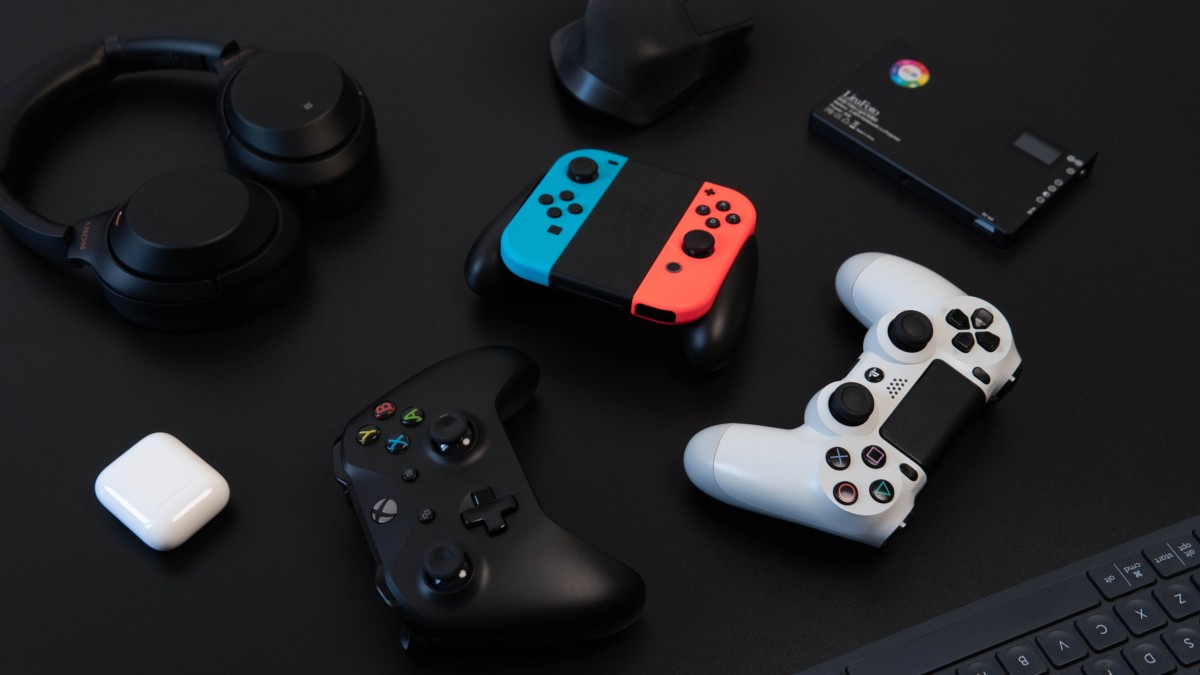
10) Stock up on gaming room accessories
Complimenting your setup with the right accessories is crucial. This is another step where individualism shines as everyone’s preferences and needs are different. You can choose colorful, monochrome, big, small, and everything in between. However, it’s still important to consider usage. As MadlionsKeyboard puts it, “To create the ultimate gaming space, choosing high-performance peripherals is essential.
For example, magnetic switch keyboards, like those at MadlionsKeyboard, provide ultra-fast response times and precise actuation, giving gamers a competitive edge. Pairing this with a high-DPI gaming mouse and a quality mousepad ensures smooth and accurate tracking.”
Accessories that are not usually thought of when thinking of gaming but are necessary, include equipment that makes you feel comfortable in your space. For example, JMATEK states, “While computers and game consoles have built-in fans to keep temperatures low, these cooling systems aren’t always constructed to withstand high heat. Combined with that, if the humidity in your room is too high, it can cause damage to your device’s internal components, like rust and corrosion. Luckily, there are a few methods to prevent condensation from forming on and within your consoles, to keep them from overheating, and to keep you comfortable and happy. If your main concern is keeping your gaming room dry, you can purchase a dehumidifier, like the Honeywell TP50WKN. Dehumidifiers remove moisture from the air, which will help provide your electronics with a safe environment. This is also a good solution if you’re playing in your basement, where there are no windows for you to use portable air conditioners or window fans.”
11) Cable management
“One aspect of setting up a game room that too many people overlook is cable management,” says, Kiesha Richardson, owner of GNL Magazine. “Cable management is so important for safety and overall aesthetics. Managing your wires helps prevent tangles, clutter, and tripping, and makes it easier to access your gaming systems and accessories without hassle. Plus, a clean cable management system just looks good!”
Josh from FULLSYNC writes on how some things aren’t as important, but cable management is not one of them. Josh writes, “Your gaming room should be a reflection of you, so don’t worry if it doesn’t look like others you see on the internet. For example, if you don’t like RGB lighting, don’t use it. It doesn’t make you any more or less of a gamer, despite what peripheral companies will lead you to believe.
However, one thing I would suggest doing is working on cable management. It looks much tidier and makes life a lot easier when you have all your cables organized. Especially if you ever decide to move things around or upgrade them at a later date.”
Nathan of Pop Desk Mats adds, “Building the ultimate gaming room is all about nailing that sweet spot between comfy, functional, and with a big enough budget looking and feeling good. I think there are a few critical areas to think about one of them being cable control. Cable trays or Velcro ties are lifesavers. A clutter-free desk equals fewer distractions and visual clarity.”
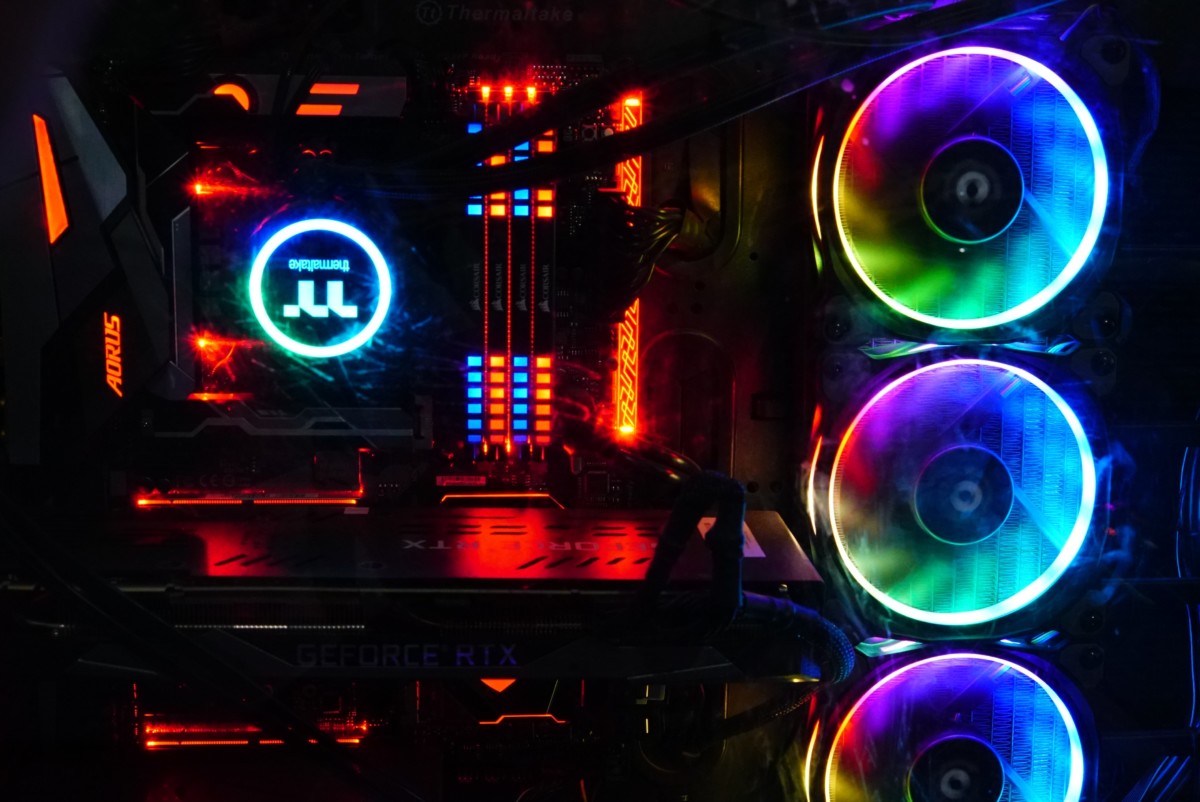
12) Incorporate lighting
Lighting doesn’t always have to be bright and colorful, it can have a calmer look away from the stereotypical gaming room. Sam from The Bonnie Home speaks on this when she says, “What comes first – functionality, comfort or style? When it comes to gaming, we believe all hold similar values. You could be the best gamer in the world – but with a poor and uncomfortable setup, you won’t last long in front of the screens.
Sometimes less is more. Gaming set-ups with bold flashing neon lights, overcrowded desks, and an array of clashing colors might impress a visitor when entering the room, but does it improve performance? Highly unlikely with the constant distraction from the screen. Tone it down and keep the focus where it matters the most.
By introducing soft LED lighting to your gaming set-up, you can optimize the screen for your eyes whilst also making the room more aesthetically pleasing. The visitor remains impressed and your gaming doesn’t have to suffer!”
Claire Evans from the family lifestyle blog: Diary of the Evans-Crittens, adds additional comments on lighting. Claire notes, “Remember when gaming that proper lighting not only sets the mood, but it also reduces eye strain. Natural light is best during the day- so open those curtains, but adjustable LED lights look great and create an immersive ambiance. Position your set-up to minimize glare on the screen for the best gaming experience.”
Martins Zarins of Luxafor writes on an alternative use for lights, to keep people away. He says, “Gamers usually get frustrated when they get distracted during gaming sessions. That’s where busy lights can come in handy. Busy lights can help gamers stay focused by signaling to others when they are in the middle of a gaming session and they can’t be disturbed. These LED indicators can be customized to display any color light you want, signaling to others your current status. Simply attach your busy light to your wall or anywhere, where it is visible to others, and continue gaming in peace.”
The post Gaming Room Ideas, Optimizing Your Gaming Setup appeared first on Redfin | Real Estate Tips for Home Buying, Selling & More.



































































































































































